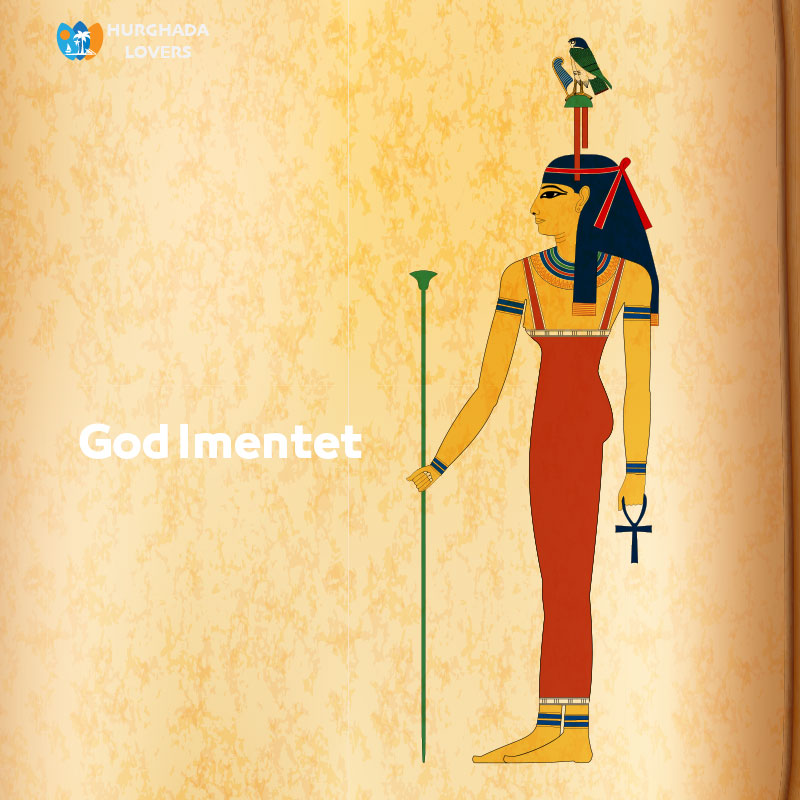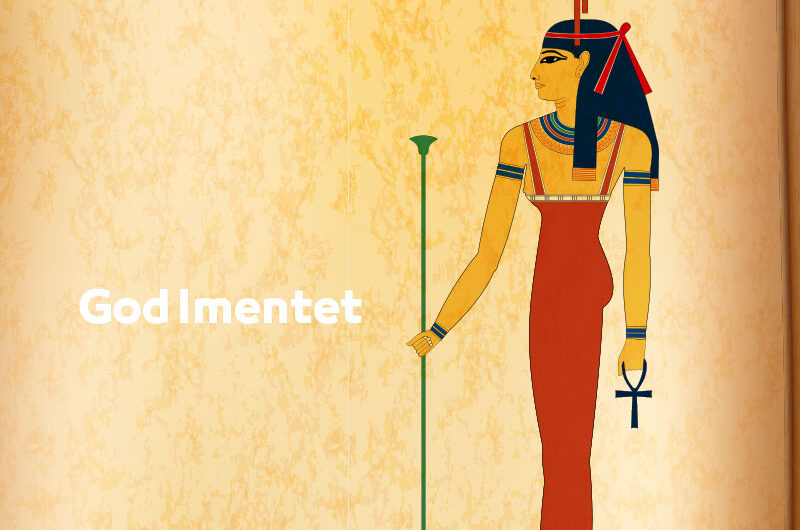God Imentet “Ament” | Facts Ancient Egyptian Gods and Goddesses | God of the fertility and rebirth in Pharaonic Civilization & Most Important Ancient Egypt Deities, Mythology Symbols, Definition, Temple, Photo and more about Amentet or Imentit…
symbol of fertility and rebirth for the ancient Egyptians and Pharaohs | Facts and history of gods and religious beliefs in the civilization of ancient Egypt and more.
Amenet is a female deity in ancient Egyptian mythology. Amenet represents fertility and rebirth, as she is the substitute for the mother goddess Isis in the afterlife.
The ancient Egyptians believed that once they reached the underworld, they would find the mother goddess, Ament, welcoming them and rebirthing their souls to suit the afterlife, and relieving the spirit of the Egyptian mother from the horror of the situation and offering food and water to the deceased.
Hurghada lovers Offer Luxury Hurghada to Pyramids Tours | El Gouna to Pyramids Tours | Makadi bay to Pyramids Tours | Sahl Hasheesh to Pyramids Tours | Soma bay to Pyramids Tours .
God Imentet
An overview of the god Amnett
● The name Amnet in the ancient Egyptian language means the hidden. This word does not symbolize the goddess Amnet only, but also symbolizes all elements and phenomena that are invisible or tangible, and symbolizes the sunset, which was a symbol of the goddess Amnet. Over time, the word Amnet was used on the tombs and funerary temples that are located On the western bank of the Nile River.
● The god Amenet is the daughter of the gods Horus and Hathor, and some scholars believe that she was a consort of the god Amun
● Goddess Amentet is a creator god. She is the mother and the father together, and she can have children without a male, and despite that, the myths do not mention the existence of a son of the goddess Amentet.
● The powers of the god Amenet were associated with silence, stillness and mystery.
● Amenet was sometimes merged with the god Neith under the name of (Neith Amentet), and each of them wears the red crown of Lower Egypt.
The historical significance of the deity is secured
● Despite the mystery and lack of sufficient information about the goddess Amenet, her presence is of great importance, as she testifies to the ancient Egyptians’ reverence for the status of Egyptian women at that time, as was her reverence in all the Pharaoh’s ceremonies.
● The status of the goddess Amenet began to emerge after her name was associated with the god Amun. Some believe that she was his wife, and others believe that she is the female representation of the god Amun. However, this did not last, as Amun replaced Amnet with death as his partner.
● Amenet is one of the eight primitive deities in the Hermbolic model in an ancient myth called the Egyptian creation myth. Amenet and her partner Amun represent the chaotic void and the invisible nature, and they are the only two deities of the eight who continued to be prominent throughout the Pharaonic dynasties.
Representations of the deity Amenet on the walls of Egyptian temples
● The god Amnet appears in the form of a beautiful woman wearing a headdress, and a falcon bird sits on top of it.
● Amenet carries in her hand a scepter and the key of life, and she stands at the beginning of the land of the dead, waiting to receive the dead.
● In other drawings, Imenet appears with wings, and a red feather on top of it. This feather also appears in Libyan drawings as it adorns the heads of Libyans, which makes it likely that the goddess Aminet was a deity worshiped in the Libyan province as well, and not only in Egypt.
● Some of the drawings depicted the goddess Amenet in the form of a cow, a lioness, or a snake, and some of them depicted a sycamore tree that Amenet chose to live in and host the dead.
● The goddess Amenet is depicted in some drawings standing next to the goddess Ibet (the goddess of the East).

